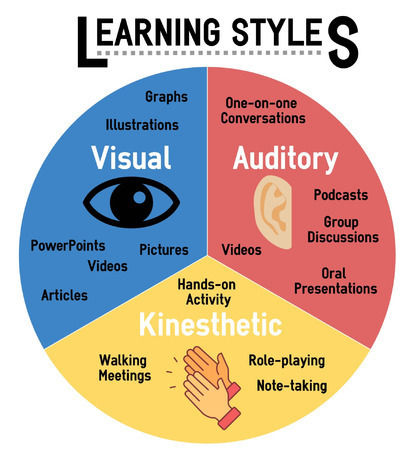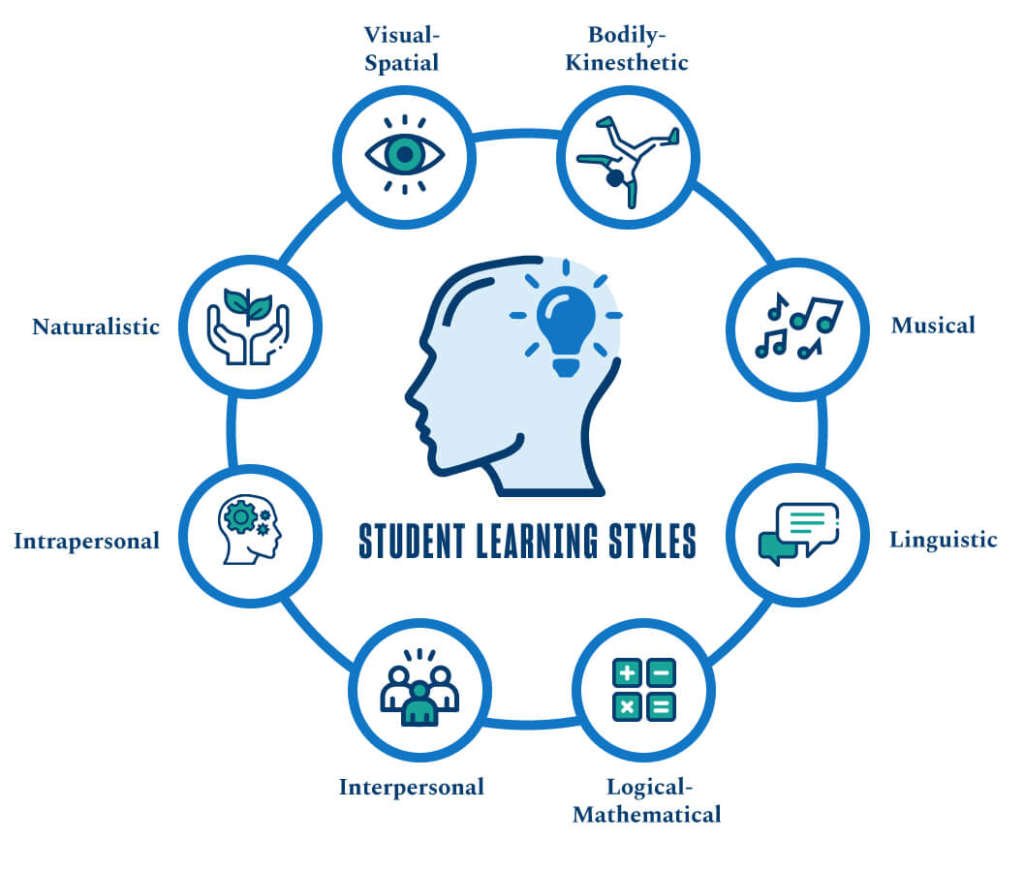
Learning style is one of the supports for achieving student learning performance, divided into visual, auditory, and kinesthetic. A person’s learning style combines absorbing information easily, organizing, and processing that information.
Visual learners prefer to use pictures, graphs, and images to organize and communicate their thoughts and learn best from using flash cards. Auditory learners prefer to listen, discuss, memorize and debate in class. They learn best from audiobooks rather than print ones. Tactile learners learn best by touch and movement—they find opportunities to take part in demonstrations, writing, or building models. Kinesthetic learners prefer to use their whole body in the learning process—they use gestures to communicate ideas and learn best in a hands-on environment.
What is the role of learning styles In teaching?

Understanding learning styles and the role of learning styles in the teaching/learning process is a key component of effective teaching. According to Sarasin, “teaching cannot be successful without a knowledge of learning styles and a commitment to matching them with teaching styles and strategies”
The goal of any teaching style is to remain focused on teaching objectives and engaging students as best you can. Not all students respond well to a particular style, which is why many professors who are versed in teaching styles use a combination of them based on the subject matter or environment.
Baca Juga : creating a positive learning environment
Students are the most important factor in building your course environment: and it’s essential to use a teaching method to engage students at all levels of learning and ability. Using a balanced mix of teaching styles that blend the best of what you have to offer will reach every student effectively.
Teachers must recognize the diversity and complexity in the classroom, be it ethnicity, gender, culture, language abilities, or interests. Getting students to work and learn in class is largely influenced in all these areas. Classroom diversity exists not only among students and their peers but maybe also exacerbated by language and cultural differences between teachers and students.
As stressed in the Educator’s Diary published in 1995, “teaching takes place only when learning does.” Considering one’s teaching style and how it affects students’ motivation greatly concerns the researchers. Although we might think of other factors, however, emphasis has been geared toward the effect of the teacher’s teaching style and student motivation.
Bergabunglah dengan Pengalaman Kami!
Menjadi bagian dari JMS bukan hanya untuk program belajar yang menyenangkan,
tetapi juga untuk mengembangkan masa depan mereka.


Berbagai Fasilitas Menarik di Sekolah Internasional di Indonesia says:
Inilah Berbagai Kurikulum International School di Indonesia says:
Rekomendasi Pekerjaan Freelancer untuk Mahasiswa - Rakamin Academy says:
Tips Memilih Sekolah Internasional Terbaik di Indonesia says:
Keunggulan Jakarta Multicultural School Sebagai Private School Terbaik di Indonesia says:
Anak Malas Belajar? Berikut Faktor Penyebab yang Harus Orangtua Ketahui - Seserina says:
Mengapa Sekolah Menengah Atas Internasional di Jakarta Menjadi Pilihan Terbaik untuk Masa Depan? - Hellodkids.info says:
Pahami Kurikulum Pada JMS Best International High School Jakarta says:
Alasan JMS Sebagai Best International High School di Jakarta says:
Inilah Fasilitas JMS International High School Terbaik Jakarta says: